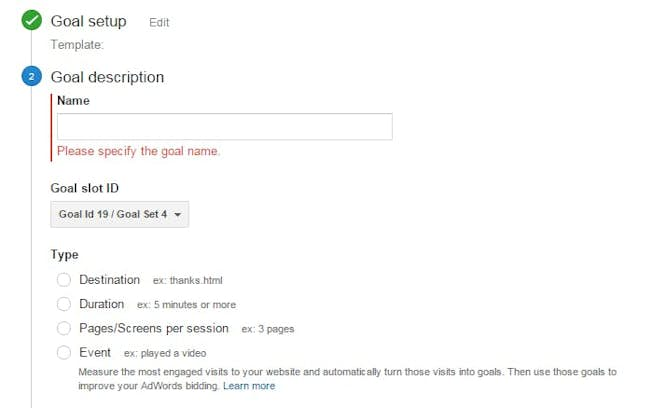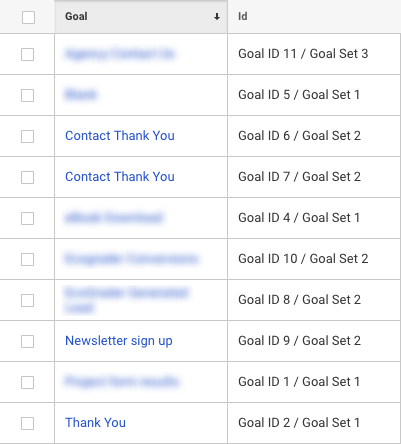Discovering What Data Is Google Analytics Goals Unable to Track
Discovering What Data Is Google Analytics Goals Unable to Track
Blog Article
Discover the Limitations of Google Analytics Goals: Revealing the Information Types That Remain Untrackable
As organizations significantly depend on data-driven decision-making, understanding the constraints of tools like Google Analytics ends up being paramount. While Google Analytics Goals deal beneficial understandings right into customer communications, there exist information types that elude monitoring, presenting obstacles to a detailed understanding of user actions.
Insufficient Customer Journey Tracking
Insufficient individual journey tracking within Google Analytics can impede the capacity to accurately assess customer actions. When the individual journey is not totally tracked, there are voids in the information that stop a thorough understanding of just how customers communicate with a site. This lack of insight can cause missed out on opportunities for optimization and improvements to the user experience.
One usual problem with incomplete customer trip tracking is the inability to see the complete course that customers take previously completing a goal or leaving the website. Without this information, it is challenging to identify where users may be experiencing barriers or rubbing points that prevent them from converting. In addition, insufficient monitoring can obscure the influence of specific advertising and marketing initiatives or web site modifications on individual actions.
To address this restriction, it is critical to set up proper tracking devices within Google Analytics to capture the whole customer trip. This may include establishing up event tracking, objective funnels, or making use of devices like Google Tag Supervisor to make certain that no essential communications go unrecorded. By acquiring a detailed sight of the customer journey, internet site proprietors can make even more enlightened choices to enhance individual interaction and drive conversions.
Attribution Challenges
Navigating via acknowledgment difficulties in Google Analytics requires a comprehensive understanding of how various touchpoints contribute to the overall conversion procedure. Acknowledgment obstacles emerge from the complexity of modern-day customer journeys, where individuals connect with several networks before transforming.
One typical attribution challenge is the problem in connecting conversions to the appropriate resource, particularly in situations where users interact with several networks before converting. This can cause inaccuracies in determining which advertising efforts are driving one of the most conversions. Furthermore, cross-device monitoring positions another attribution challenge, as customers usually change in between tools during their trip, making it testing to track their communications perfectly. Marketers should very carefully examine and translate acknowledgment information to make informed decisions and maximize their marketing methods properly.
Offline Conversions
Provided the challenges related to connecting conversions accurately in online networks, the dimension of offline conversions offers a significant chance for marketers seeking a much more extensive understanding of their clients' journey. Offline conversions describe activities that clients take in the real world, such as making purchases in brick-and-mortar shops or over the phone, attending events, or engaging with published products - what data is google analytics goals unable to track. These conversions are essential for organizations that run both online and offline, as they supply useful understandings into the performance of marketing projects across numerous touchpoints
Tracking offline conversions commonly presented a significant obstacle for marketing experts, as it was testing to attach these activities back to details online communications properly. With improvements in innovation, such as the integration of CRM systems, unique identifiers, and voucher codes, businesses can now bridge the void in between online and offline data to acquire a much more alternative view of client behavior. By efficiently determining offline conversions, marketing professionals can optimize their methods, allocate resources extra successfully, and inevitably enhance the general customer experience.
Cross-Device Monitoring
Cross-device monitoring plays an essential function in comprehending the interconnected nature of customers' electronic interactions throughout several gadgets. In today's omnichannel world, where customers effortlessly switch over in between desktop computers, tablets, and smartphones, tracking their actions across these gadgets is vital for online marketers to acquire an extensive view of their client trip.

Moreover, personal privacy issues and laws such as GDPR and CCPA have better challenging cross-device tracking. With customers demanding more control over their data and boosted constraints on monitoring technologies, marketers need to discover privacy-compliant and cutting-edge ways to link customer communications throughout devices.
Dynamic Content Involvement
Understanding individual engagement with vibrant web content is pivotal in enhancing electronic advertising and marketing strategies for enhanced audience communication. Dynamic material describes internet site components that alter based on individual actions, choices, or other factors, using an individualized experience. Tracking individual communications with dynamic content presents obstacles for standard analytics tools i was reading this like Google Analytics.
While Google Analytics can track standard interactions like clicks and web page views, it may struggle to catch even more nuanced interactions within dynamic material. what data is google analytics goals unable to track. Metrics such as time spent on specific vibrant elements, hover activities, or interactions within pop-ups are frequently not quickly measurable utilizing basic monitoring approaches. This restriction prevents online marketers' capacity to completely comprehend how users are engaging with vibrant material and tailor their methods appropriately

Final Thought
To conclude, Google Analytics objectives have restrictions in tracking insufficient customer trips, associating conversions accurately, recording offline conversions, tracking cross-device interactions, and measuring dynamic web content involvement. These constraints highlight the significance of checking out additional monitoring methods and devices to acquire a much more detailed understanding of customer behavior and conversions past what Google Analytics can give.
While Google Analytics Goals offer beneficial understandings right into customer interactions, there exist information kinds that avoid tracking, presenting obstacles to a thorough understanding of individual habits.Insufficient individual trip tracking within Google Analytics can prevent the capability to properly evaluate individual behavior. When the customer trip is not completely tracked, there are spaces in the information that stop an extensive understanding of how users communicate with a website.One typical problem with insufficient individual trip monitoring is the failure to see the full course that customers take in the past completing look at here an objective or leaving the website. By obtaining a thorough sight of the customer trip, website owners can make more educated choices to enhance user interaction and drive conversions.
Report this page